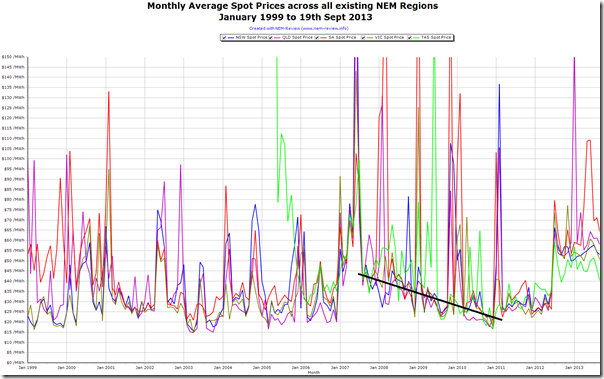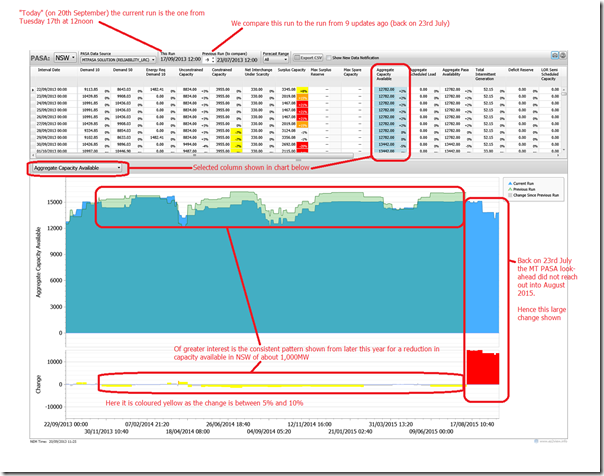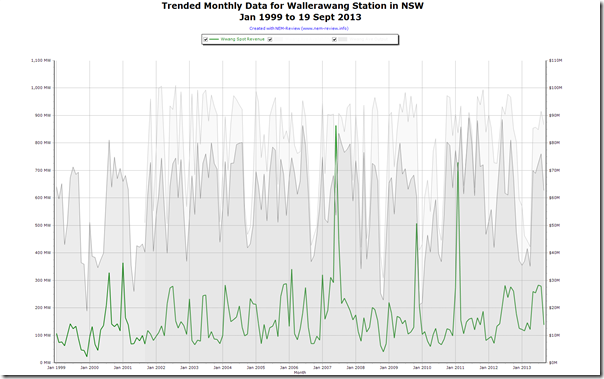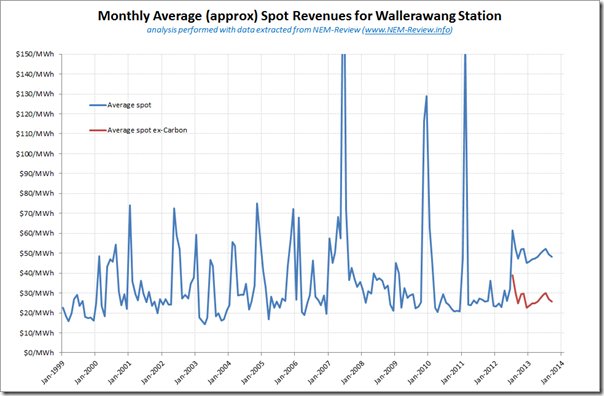As we’ve been noting for several years on WattClarity, demand continues to decline across the NEM for a number of reasons (including these reasons here).
As shown in this chart from NEM-Review, this has contributed to a trend of prices being low and flat for most months since the rains followed the drought of 2007, with precious few exceptions – such as:
(a) Summer 2013 in Queensland, and
(b) Q2 2013 in South Australia.
We noted earlier this year that black coal generators have borne the brunt of reduced production volumes – and Paul Taliangis noted this week that he sees gas generators on the line as well, squeezed between declining demand and rising renewables. We’ve seen Collinsville close, Tarong mothball 2 units, EnergyAustralia withdraw a unit at Yallourn and then Tallawarra, and Alinta’s Northern station progress to a “Q1 only” type operations.
A couple of weeks ago, we noticed the forecast withdrawal of about 1,000MW of capacity in NSW turn up in AEMO’s MT PASA forecasts. We’ve waited until after the federal election to see if the change in government (and hence in carbon policy) would have any impact on these availability plans – but none have been seen to date.
As can be seen in this snapshot from ez2viewAustralia, contrasting the current forecasts for available capacity against what was being forecast in July reveals a fairly consistent drop in available capacity in NSW.
There have been whispers that what looks like a 1,000MW withdrawal might be the withdrawal of 2 unit at Wallerawang, given that (in late July) EnergyAustralia purchased full ownership from the NSW government. As the company noted on 12th August, the purchase enables it to “operate the plants more flexibly”, so it’s possible that this has been one of the moves made in the light of the suppressed wholesale market (and no signs that this is going to change soon).
The following trend from NEM-Review highlights that the station has not (yet?) seen a significant change in dispatch patterns on a month-on-month basis since the start of the NEM:
Copying this data into Excel produces one final step, where we trend average spot revenues for the Wallerawang power station, with the comparison added from July 2012 subtracting a $23/tonne carbon tax:
Note that this update occurred too recently to be incorporated in the publication of AEMO’s SOO for 2013.
Note also that there are other units of (approximate) 500MW size in NSW (e.g. Liddell units). Hence, there may be other explanations to the drop in available generation.
What does seem apparent (unless I have missed something – and, if I have, please let me know by commenting below) is that one or more participants are collectively going to remove 1000MW of capacity from NSW later this year – with no return-to-service date apparent in the coming 2 years.
Interesting times ahead…






It seems like it man be time to level the playing field for generators by removing the RET and other distortions favouring renewable energy. It makes no sense to encourage residential solar PV given it costs $600/tonne CO2 abated and wind costs over $100/tonne CO2 abated.
We need new distortions that favour nuclear! Or why doesn’t the taxpayer just fork out $180 billion for 30 GW of nuclear reactors. Are you with me Peter?